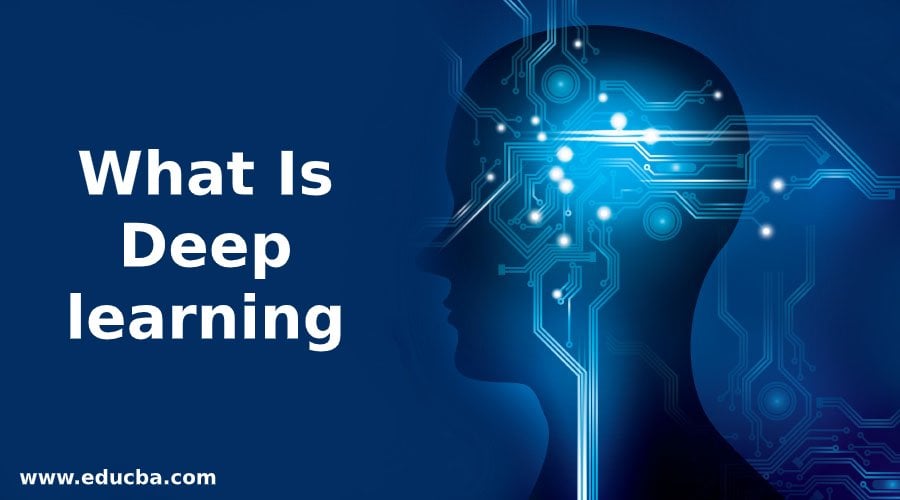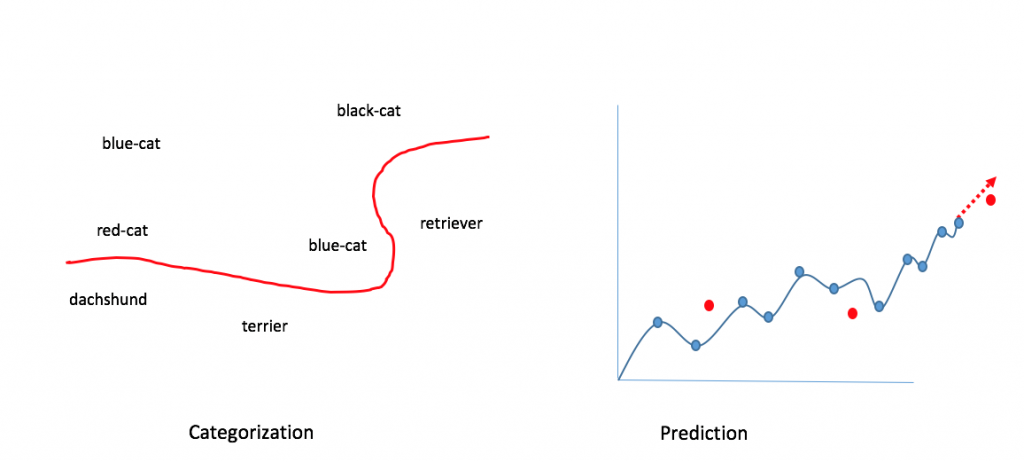Updated May 8, 2023
Deep learning is an evolving and powerful branch of artificial intelligence (AI) that enables computers to learn from complex data. By understanding how the machines process information, users can create more accurate models faster, and with less computational resources than with other AI techniques. In this guide, we’ll explore the basics of deep learning and look at some of its applications.
What is Deep learning?
Deep learning is a type of artificial intelligence (AI) based on a set of algorithms that attempt to model high-level abstractions and complex relationships between different types of data. It can be used to solve problems in a variety of fields, ranging from image recognition and classification to natural language processing. Deep learning leverages high-performance computing to extract and recognize patterns in large datasets that traditional algorithms cannot uncover by themselves.
In general, we will do two tasks all the time consciously or subconsciously, i.e., categorize what we felt through our senses (like feeling hot, cold mug, etc.) And prediction, for example, predicts the future temperature based on the previous temperature data.
We do categorization and prediction tasks for several events or tasks in our daily life, such as below:
- Holding a Cup of Tea/Water/Coffee etc., which may be hot or cold.
- Email categorization such as spam/ not spam.
- Day-light time categorization, such as day or night.
- Long-term planning of the future based on our current position and things we have – is called prediction.
- Every creature in the world will do these tasks in their life. For example, consider animals like crows will categorize a place to build its nest or not, a bee will decide on some factors when and where to get honey, a bat will come during the night and sleeps during the morning based on the day and night categorization.
How Does Deep Learning Work?
Deep learning works by building a network of artificial neurons, which are structured like biological neural networks. Data is fed into the network and processed in successive layers, with each layer applying increasingly more complex models to capture intricate patterns within the data. When a model extracts patterns from a given dataset, it uses them to make predictions about future data points or target variables such as image labels or text translations. The neural network is “trained” using algorithms that adjust the weights of the connections between neurons in response to new data presented to it or errors made by its predictions. As the training process continues and more data is presented, accuracy and efficiency improvements over time.
Applications of Deep Learning.
Deep learning offers a number of benefits for businesses, including enhanced accuracy and speed of predictions. It is already being used in a variety of industries to automate tasks such as object recognition in images, text-to-speech translation, language understanding, and autonomous robot navigation. In the medical field, deep learning algorithms are being applied to diagnose diseases more quickly and accurately than traditional methods. In finance, deep learning is used to detect fraudulent transactions with greater accuracy than before. In retail and marketing, deep learning can be applied to create tailored recommendations based on customer behavior. Additionally, research projects have explored uses for natural language processing (NLP) which utilizes neural networks trained on vast amounts of text data to understand communication in context.
Popular Deep Learning Algorithms and Tools.
Today, there are several popular deep-learning algorithms and tools that are used across industries. These include convolutional neural networks (CNN), recurrent neural networks (RNN), natural language processing (NLP) models, generative adversarial networks (GANs), reinforcement learning models, and transfer learning. Popular deep learning tools which can be used to develop AI-based applications include TensorFlow, PyTorch, Keras, Scikit-learn, Apache MXNet, and more. Additionally, specialized platforms like Amazon Sagemaker enable developers to build complex machine-learning models with no prior experience required quickly.
Use Them – Important
Let us visualize these tasks categorization and prediction, and they will look alike as in the below image; for categorization, we are doing categorization between cats and dogs by drawing a line through data points, and in the case of prediction, we draw a line through data points to predict when it will increase and decrease.
1. Categorization
- In general, to categorize between cats and dogs, or men and women, we don’t draw a line in our brains, and the position of dogs and cats is arbitrary for illustration purposes only, and it is needless to say, the way we categorize between cats and dogs in our brains is much complex than drawing a red line as above.
- We will categorize between two things based on shapes, size, height, looks, etc., and sometimes it will be difficult to categorize with these features, such as a small dog with fury and a newborn cat, so it is not a clear-cut categorization into cats and dogs.
- Once we are able to categorize between cats and dogs when we are children, then onwards we are able to categorize any dog or cat even if we didn’t see it before.
2. Prediction
- For prediction based on the line, we draw through data points if we are able to predict where it is most likely to go upward or downward.
- The curve is also a prediction of fitting new data points within the range of existing data points, i.e., how close the new data point is to the curve.
- The data points which are in red color in the above image (right side) are examples of both within and beyond the range of existing data points, and the curve attempts to predict both.
Finally, drawing a curved line from data points marks the end of both task categorization and prediction. If we are able to train the computer model to draw the curvy line based on data points we are done with, then we can extend this to apply in different models such as drawing a curvy line in three-dimensional planes and so on. The above thing can be achieved by training a model with a large amount of labeled and unlabelled data, which is called.
Examples
As we know, machine learning is a subset of artificial intelligence, but technology represents the next evolution of machine learning. Machine learning will work based on algorithms and programs developed by humans, whereas earns through a neural network model which acts similarly to humans and allows machines or computers to analyze the data in a similar way as humans do. This becomes possible as we train the neural network models with a huge amount of data, as data is the fuel or food for neural network models.
Below are some examples in the real world:
- Computer Vision: Computer vision deals with algorithms for computers to understand the world using image and video data and tasks such as image recognition, image classification, object detection, image segmentation, image restoration, etc.
- Speech and Natural Language Processing: Natural language processing deals with algorithms for computers to understand, interpret, and manipulate human language. NLP algorithms work with text and audio data and transform them into audio or text output. Using NLP, we can do tasks such as sentiment analysis, speech recognition, language transition, natural language generation, etc.
- Autonomous Vehicles: For the purpose of training the models to recognise street signs, enormous amounts of data are used; some models focus on recognising pedestrians, humans, etc., for driverless automobiles operating on the road.
- Text Generation: A fresh text with accurate spelling and grammar, from Wikipedia to Shakespeare, can be produced by employing models educated by language, grammar, genres of texts, etc.
- Image Filtering: It can be accomplished by models, such as adding color to black-and-white photographs, which will take more time if we do it manually.
Conclusion
Finally, it’s an overview of the technology and its applications in the real world. I hope you will have a good understanding of what deep learning is after reading this article. As we know today, image recognition by machines trained in some cases is better than humans, i.e., in identifying cancer in blood and tumors in MRI scans, and Google’s alphaGo learned the game and trained for its ‘Go’ match by training its neural network by playing against it over and over.
Recommended Articles
This has been a guide to deep learning. Here we have discussed the basic concepts and examples. You may also look at the following articles to learn more –




